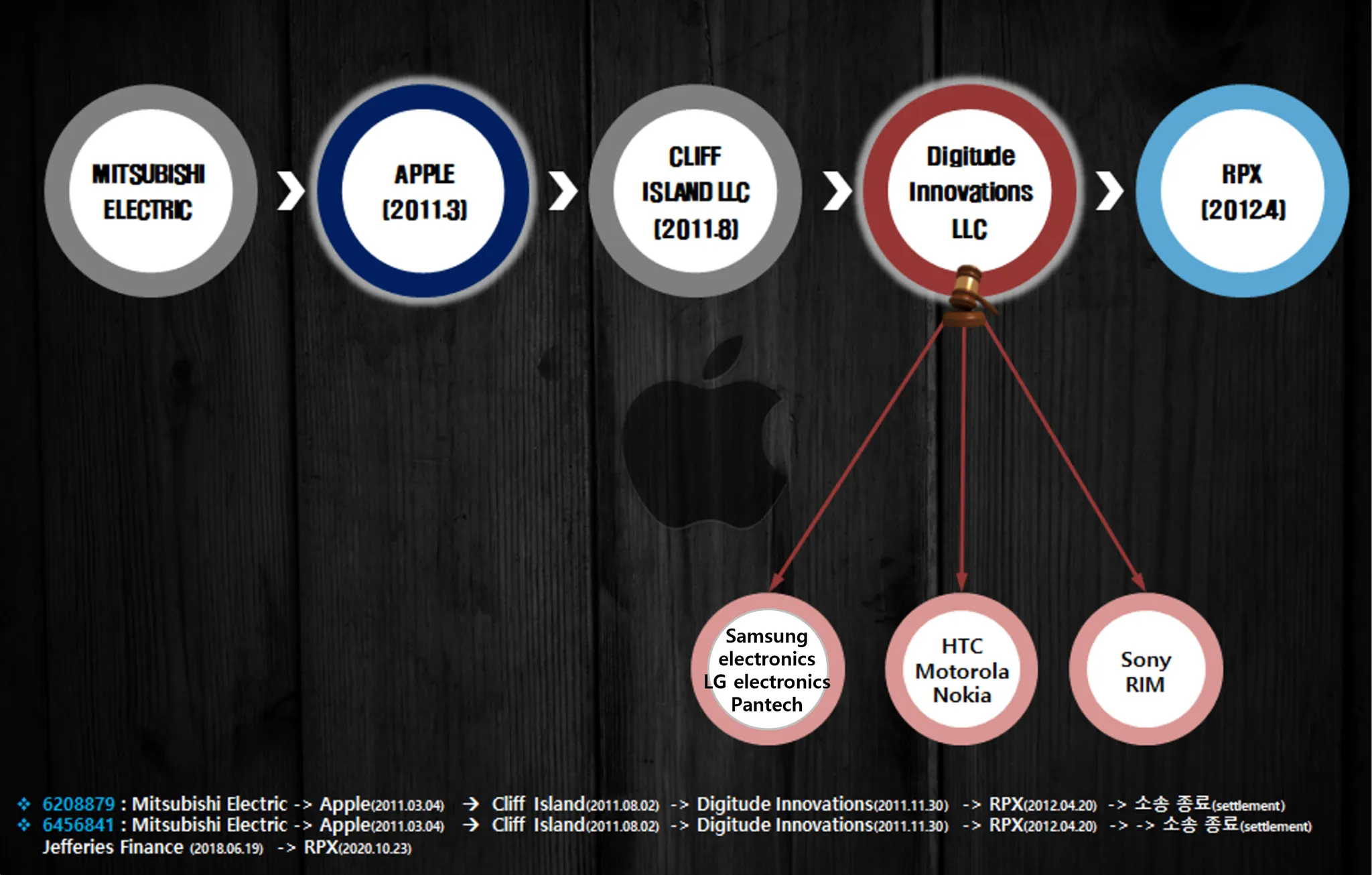Patent disputes in product-sevice-technology fields utilization map
Using Augmented Reality (AR; AR glass) technology field, company Apple as an example, we provide patent litigation contents utilizing PatentPia GoldenCompass. If you click on the chain(link) marks that are combined to each item in the above utilization map, the example page will open in a new window.
Litigation contents
Patent litigations data based on
Patent litigations contents provided by PatentPia GoldenCompass are based on US district courts (to be expanded).
Based on patent litigations aggregation
Patent litigations are arguably the sharpest battlegrounds in the patent world. As a result, the realities of litigation are extremely diverse.
Multiple patents can be used in one patent litigation. Therefore, when there are multiple lawsuits, the number of lawsuits and the No. of patents used in the lawsuits should be counted separately.
In addition, there are often more than one plaintiff or defendant involved in a single litigation. The person filing the lawsuit is called the plaintiff, and the other party is called the defendant. Therefore, when there are multiple lawsuits, the No. of plaintiff litigations and the No. of defendant litigations must be counted separately.
On the other hand, if you have an exclusive right to practice not only your own patents in possession, but also the patents of others, you can also file a lawsuit based on the exclusive right to practice. In this case, the plaintiff litigant may not be the patent owner. In addition, you can also file a confirmation lawsuit for patents in possession of others. In this case, you will be the defendant litigant and the patent owner. Therefore, the No. of litigation-involving patents in possession or the No. of patents in possession that are used in litigation is counted independently of the plaintiff/defendant of the litigation.
Patent rights are property rights and therefore subject to assignment, etc. They can be assigned before, during, or after litigation. Therefore, for a given company/organization, the No. of litigation-involving patents in possession or the No. of patents used in litigation is limited to the patent set held by the company/organization as of today as the current right holder. Therefore, if a particular patent is assigned to a specific company/organization after it has been used in litigation, even if the litigation was filed in the past and had nothing to do with the specific company/organization (neither as a plaintiff nor as a defendant), the company/organization still owns the patent today, so the No. of litigation-involving patents in possession or No. of patents used in litigation will include the litigation filed in the past.
Non-exclusively, the plaintiff in a lawsuit determines the court in which the lawsuit is litigated. However, if a lawsuit is transferred (changed courts) due to consolidation (multiple lawsuits are combined), etc., the plaintiff may not be the one who determines the court where the lawsuit is filed.
Sources of patents used in litigated patent litigations
Plaintiffs in litigation include i) manufacturing companies, ii) NPEs, iii) universities/research institutes, and iv) intervenors. And, the No. of patents used in litigation (excluding confirmation litigation) can be divided into i) patents in possession, ii) purchased patents, and iii) patents with exclusive license to practice. The "plaintiff litigant vs. source of purchased patents" can play out in various ways.
The example below shows two patents purchased by Apple from Mitsubishi Electric, assigned to Cliff Island LLC, assigned in turn to Digitude Innovations LLC, and then assigned to RPX, where Digitude Innovations LLC litigated the patents against the smartphone filing companies of 2021, excluding Apple, and then assigned the patents to RPX. The litigation was settled after the patents were assigned to RPX and then kind of.
Trial contents
Based on patent trials data
Patent trial contents provided by PatentPia GoldenCompass are based on inter partes (with opposing parties) trials filed at the USPTO in the United States of America and the Korea Intellectual Property Trial and Appeal Board (to be expanded).
Based on patent trial aggregation
Patent trials are filed on a per-patent basis. Accordingly, multiple trials may be filed against one patent. Accordingly, the No. of patent trials and the No. of patents used in trials should be counted separately.
Patent trials are filed against the patentee. The person filing the trial is referred to as the petitioner, and the other party is referred to as the respondent. In non-exclusive cases, the respondents are the patent right holders. Therefore, the No. of patent trials as petitioners and No. of patent trials as respondents should be counted separately when considering a specific company/organization.
Since patent rights are property rights, they are subject to assignment, etc. They may be assigned before, during, or after a trial. Therefore, for a given company/organization, the No. of trial-involving patents in possession or the No. of patents used in trials is limited to the patent set held by the company/organization as of today as the current right holder. Thus, if a particular patent is assigned to a particular company/organization after it has been used in a trial, the No. of patent trials used or No. of patents in trial-involving patents in possession based on that company/organization will include trials filed in the past, even if those trials were unrelated to the particular company/organization (neither as petitioner nor as respondent), because the company/organization currently holds the patent.
